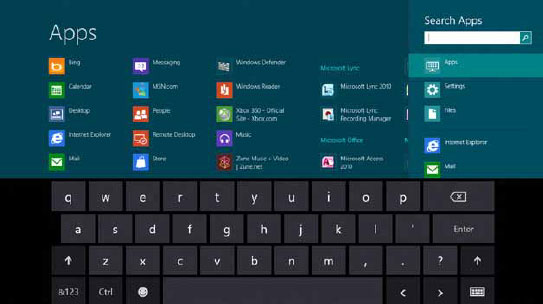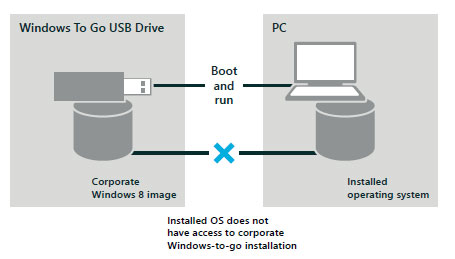Windows 8 offers enhanced security, network connectivity, multiple form factors, energy conservation, and Internet Explorer 10
By Stephen Pate – While some will focus on the touch interface, there are substantial improvements in Windows 8 that addresses energy costs, organizational security and productivity both within the corporate network and through mobile access.
Just slightly ahead of today’s release of the anticipated Windows 8 Consumer Preview, Microsoft has released a 15 page introduction for business users.
Download the Consumer Preview of Windows 8
It relieves some of the anxiety businesses may have over the new Metro interface and illustrates the new innovations that will help business to become more competitive.
Windows 8
Windows 8 is Windows re-imagined in the words of Microsoft. Energy conservation is a bigger part of the cost of computing than it was 10 years ago.
The touch interface has achieved popular acceptance in the face of an aging desktop for Windows 7 and earlier versions.
More people access the web from mobile computing devices than ever before. Windows 8 will be called Windows everywhere once it starts to proliferate beyond the desktop, laptop and server. Apple has the early adopter advantage with mobile. With the iPhone and iPad, users can reach much of their computing resources without turning on their workstations.
Microsoft has stepped up to these challenges with Windows 8 but it is not throwing businesses to the wolves, as it were. Microsoft will extend that mobile connectivity even further with the same look and feel and applications across all platforms. This has resulted in a refresh of the user interface for Microsoft apps and increased productivity for business users through lower training costs as one example.
There is a transition from the familiar and popular Windows 7, Vista and XP to the brave new and better, we hope, world of touch experiences, mobile and other new features.
Windows 8 Consumer Preview Product Guide for Business
The Guide for business discusses how the Metro interface creates a more immersive experience for users in line of business applications. The desktop is not a collection of inert icons: it’s a live environment where users can get up-to-the minute feedback from applications.
The Guide explains how users can navigate the new Metro interface and quickly revert to the Windows 7 desktop when needed.
Security and form factors
Windows 8 has an innovative feature called Windows-to-Go that allows organizations to issue a mobile operating system environment that is compatible with their employees mobile use, while protecting corporate data.
With Windows on Intel and ARM mobile processors, the same OS and applications are supported in full power and energy-saving configurations.
Internet Explorer 10
IE 9 has new security and group features to protect business resources from hacking and malware. IE 9 supports the new touch interface but is backwards compatible with IE 7, 8 and 9.
“To help move the web forward, Internet Explorer 10 supports modern standards like HTML5, CSS3 and SVG to give corporate developers the ability to build more powerful web applications. Furthermore the underlying platform is fully interoperable across internet Explorer and its desktop version, enabling developers to write the same markup for both experiences. Internet Explorer is also plug-in free. Line of business applications that require legacy ActiveX controls will continue to run in the desktop version of Internet Explorer.”
“The desktop version can be easily accessed by tapping on “Use Desktop View” in Internet Explorer.”
DirectAccess
Mobile computing has grown so quickly in the past three years that little concern has been given to privacy and security. For the organization the challenge is to support access from anywhere on any device without compromising real privacy and security issues.
DirectAccess is an upgrade of Virtual Private Networks (VPN) that allows secure and persistent connections between mobile workers and the corporate network without a login. This should reduce the constant annoyance of Apple’s mobile OS that has significant problems retaining login and passwords and maintaining a persistent connection to networks.
BranchCache and The Cloud
BranchCache provides regular updates of branch office networks from the corporate network. This will cut inter-network traffic and offer branch offices with more responsive. Organizations will need to test this against direct access to corporate networks for performance and data generation issues. Networking features will be support through the SQL 8 and Server 8 releases this year.
“Performance is improved by reducing data transfer size requirements through cache encryption, using data de-duplication, and minimizing cache block sizes. BranchCache can scale to offices of any size by allowing you to deploy as many hosted cache servers as needed at a location. New database technologies ensure that BranchCache is faster and more scalable.”
Windows 8 has native support for The Cloud and other Enterprise Class infrastructure technologies, including a trusted boot process.
For more on how Windows 8 impacts organizational efficiency and security, see Windows 8 Consumer Preview Product Guide for Business.




